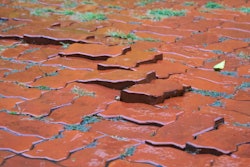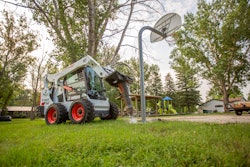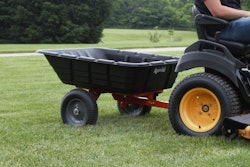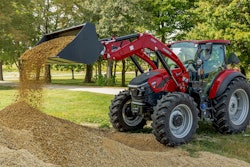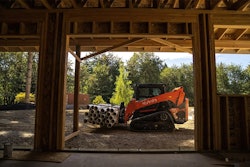
Take a look at what experts recommend keeping in mind when creating designs for this new year and what traps to avoid falling into.
Biggest mistakes
Keith Buzzelli, landscape architect with Eichenlaub, and Dana Cornetto, sales manager and designer with Marmiro Stones, have seen many design trends come and go over the years, and one of the biggest mistakes they see landscape designers making nowadays is putting too much focus on what green industry trends are projected for each year.
“Quite often, designers want to follow the latest fad so they can stay current; unfortunately, a trend is exactly that, just a trend,” Cornetto says. “Styles come and go, some very quickly. Making a decision based upon a design movement that is temporary for a long-term application such as masonry or hardscaping can be a very costly mistake.”
Buzzelli has seen countless projects that show their age due to current trend elements that were incorporated at the time. To keep your designs relevant and to ensure they age well, he suggests sticking with classic materials and focusing on broader, universal trends that can have lasting benefits. When in doubt, he says, stick with classy and sophisticated over trendy.
“There are certain trends happening now, especially with global warming and climate change, and a lot of professionals are going for sustainability, landscapes that take less water, those that are a little better with stormwater management and being more environmentally responsible,” he says.
Keeping with the green design theme, Cornetto recommends making the most of recycled materials like stone, wood pallets, old brick, metals or glass when creating a design.
“Thinking green in your design will not only look good but make you feel good about doing it,” she says. “Green design is a method to design, create and maintain your landscape to save time, money and energy. This is a trend that should always be in style.”
Along similar lines, Cornetto suggests that if your customers are requesting items that are, indeed, considered trendy, incorporate elements such as pillows, accessories, potted plants and other non-permanent items that can easily be swapped out.
While you don’t want to completely disregard the current green industry trends, Cornetto recommends keeping a 75/25 ratio stock of classic and trendy ideas at the forefront of your design roster just in case.
“Housing stock of both classic products and trending products will increase efficiency in sales and confidence in customers,” she says. “Your meat and potatoes of sales is commonly standard items, but being able to offer at least a limited selection of fun, new fads will keep your customers excited and feel confident knowing you are keeping up with the times.”
Buzzeli says the other mistake he’s noticed over the years is designers forgetting the basics of design, such as basic geometry, balance, scale, color, flow and always having two reasons to incorporate something into a plan.
Buzzeli stresses the importance of not taking a good idea that you have and “crowbarring” it into someone’s property.
“Respect the area you’re in and the landscape that’s already there,” he says. “Respond to the landscape and let the landscape speak to you and tell you what it wants. You can listen to what your clients want, but there’s definitely a balance between what they want and something that’s way outside of what’s appropriate.”
Staying informed
Both designers agree that staying well-informed and involved in the happenings of the green industry will help inform your design decisions, and this can be accomplished numerous ways.
Buzzeli’s go-to method of finding inspiration focusses on his expansive collection of design literature.
“It’s really important to keep a big library of books with pictures,” he says. “There are so many talented people, past and present, and it’s great to look at what they do and then not plagiarize it but put your own spin on it. It should inspire you to put your own personal touch to it.”
Buzzeli says there’s no need to reinvent the wheel when there are numerous sources for inspiration already out in the world, and many ideas, he adds, can be found simply walking around in nature.
Cornetto agrees that staying plugged in to other designers and companies can help keep you aware of what’s worked and what’s fallen flat when it comes to design ideas, and when you are more knowledgeable of the happenings around you, you can appear much more informed to your customers.
“There’s a saying that’s used a lot in music and sports, ‘You get better by playing with people who are better than you,’” Buzzeli says. “There are so many really talented designers you can look at and learn from to keep things fresh. If you find yourself doing the same kind of design over and over, that’s the best way to get out of it.”
Joining up with green industry organizations such as the American Society of Landscape Architects (ASLA) or the National Association of Landscape Professionals (NALP) can also help keep you plugged in to what’s happening outside your coverage area.
“With the American Society of Landscape Architects, it’s a pretty good, close-knit community, and people share ideas,” Buzzeli says. “You can’t know everything with landscape architecture because it’s such a broad field, so it’s good to see what other companies are doing.”
Taking part in continuing education units (CEUs) and online forums allows you to always be on the up-and-up with green industry practices, certifications and concerns, and it keeps you relevant to your clients.
Along with keeping up with local and national green industry occurrences, both designers agree that taking time to travel the world and study how other cultures create their designs is beneficial to keeping ideas fresh.
“Traveling to other parts of the country inspires new flavors of designs and lets you think outside the box of the ‘norm’ for your region,” Cornetto says. “Experiencing new cultures and ways of living in other territories can inspire new styles of plantings, patterns, types of stones and materials, furniture and accessories.”
For this year, Buzzeli and Cornetto recommend taking ample time to study designs, whether they be found in books, online or in other cities, states or countries. This, they say, will allow you the chance to try your hand at revamping an old concept, while helping you avoid repeating designs.
“Think long term and think less is more,” Cornetto says. “Remember, you are designing spaces that people will enjoy for many years. A renovation or new design is a very costly thing, so making the right decisions is important.”




